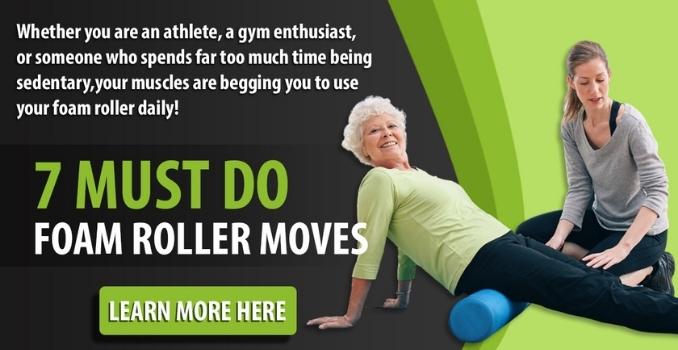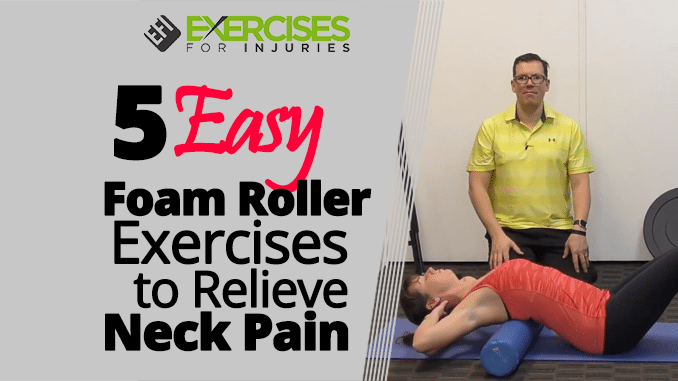
Neck pain is a widespread problem often stemming from prolonged time spent at desks, device use, or poor sleeping posture. I’ve dealt with this nagging discomfort myself, and adding foam roller exercises for neck pain to my routine has been a game-changer. These exercises help release muscle tension, enhance blood flow, and reduce discomfort effectively. In this blog, I’ll share step-by-step instructions for using a foam roller to target neck pain and highlight its additional benefits. Plus, I’ve included expert insights to ensure you have a thorough understanding of this approach.
Preparation and Safety Tips
Before you start, remember that safety is key. Dr. Sarah Johnson emphasizes, “Never apply direct pressure on the cervical spine. Focus on the muscles around it instead.” Always position your foam roller on a stable surface and use slow, controlled movements.
Step-by-Step Foam Rolling Routine
- Warm-Up: Begin with light stretches to prepare the muscles.
- Target the Base of the Skull: Place the foam roller at the base of your skull and gently roll back and forth.
- Upper Back Focus: Transition to rolling the upper back, as tension here often contributes to neck pain.
- Complementary Exercises
Give these five neck foam roller exercises, to help ease your neck pain.
- Rotate Head Side to Side with Foam Roller.
- Chin Nods on the Foam Roller.
- Arching Over the Foam Roller.
- Lying Sideways on Foam Roller.
- Lying on Foam Roller.
1. Rotate Head Side to Side with Foam Roller

- Lie on the floor. Place the foam roller underneath your neck. Relax your upper body and put your arms to the side. Bend your knees and flatten your feet.
- Rotate your head to one side and go to a point where you get some resistance and feel a light stretch, then go back to the start position and repeat the movement to the other side.
Start off with 1 set of 5 reps on each side alternating back and forth. Perform this exercise in smooth, controlled movement with a good stop at the end position for 2 seconds. The intensity is light. This exercise aims to stretch out the muscles in the neck to help ease your neck pain.
2. Chin Nods on the Foam Roller
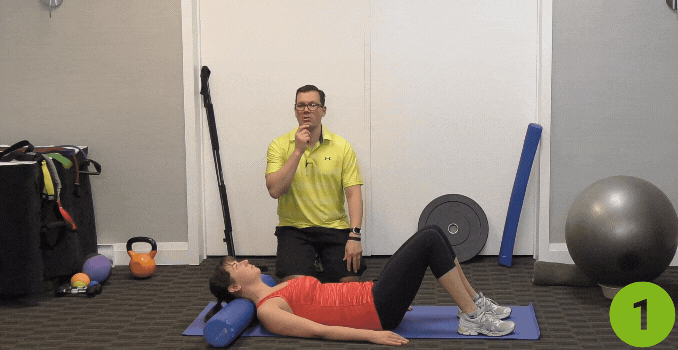
- Lie on the floor. Place the foam roller underneath your neck. Relax your upper body and put your arms to the side. Bend your knees and flatten your feet.
- Nod a little, hold that end position for about 2 seconds, relax, and repeat the movement.
Start off with 1 set of 5 reps. Perform this exercise in smooth, controlled movement with a good 2-second hold at the end position. The intensity is light. This exercise aims to improve the movement in the neck and stretch out the muscles in the back part of the neck.
3. Arching Over the Foam Roller
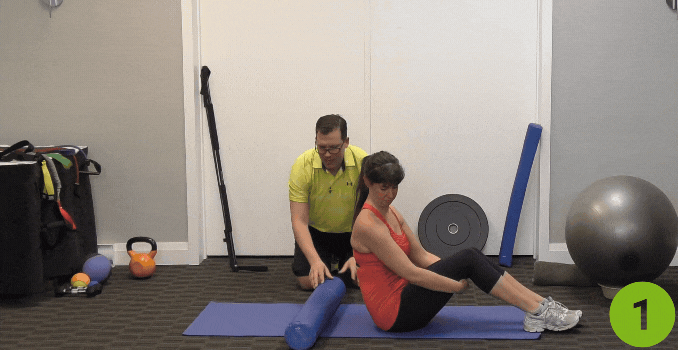
- Lie on the floor. Place the foam roller underneath your mid-back area. Bring your hands overhead and arch over to the foam roller.
- Drop your elbows and work on loosening up your mid-back area. Relax, go back up and repeat the movement.
Start off with 1 set of 5 reps. Perform this exercise in smooth, controlled movement with a good stop at the end position for 2 seconds. The intensity is light. The purpose of this exercise is to massage and loosen up the tightness in the mid-back area to ease the neck pain.
4. Lying Sideways on Foam Roller

- Lie on your side on the floor. Place the foam roller underneath. Bring your bottom arm overhead and rest your head on your arm. Keep your back and legs straight.
- Then, slowly roll your body back and forth. Relax and repeat the movement on the opposite side.
Start off with 1 set of 5 reps. Perform this exercise in smooth, controlled movement with a good hold at the end position for about 2 seconds. The intensity is light. This exercise aims to work on the movement in the mid-back area and to intensify the stretch in the outer part of the neck to help ease neck pain.
5. Lying on Foam Roller

- Place the foam roller on the floor and lie on it from your tailbone all the way to your spine and up to your head.
- Relax your upper body and put your arms to the side. Bend your knees, flatten the feet, and hold that position. You can bring your arms behind your head and drop your elbows if you want to intensify it.
Start off with 1 set of 2 reps. Perform this exercise in smooth, controlled movement with a good hold at the end position for a good 20 seconds. The intensity is light. The purpose of this exercise is to statically stretch the front of the shoulders, which are oftentimes tight, which increases neck pain.
Follow the foam rolling with neck and shoulder stretches and strengthening exercises to maximize results.
Understanding Neck Pain
Neck pain is a common issue, often caused by muscle tension, stress, or poor posture. Physical therapist Dr. Johnson states, “Chronic neck pain can lead to compensatory movements and tension in other parts of the body, making it essential to address early.” If ignored, neck pain can disrupt daily activities and affect sleep quality.
What Is a Foam Roller?
For those unfamiliar, a foam roller [1] is a cylindrical piece of equipment made of foam that aids in self-myofascial release. This means it helps loosen tight muscles and improve mobility. Foam rollers come in various types, including smooth, textured, and different densities. For neck pain starts with a softer foam roller to avoid excessive pressure on sensitive areas.
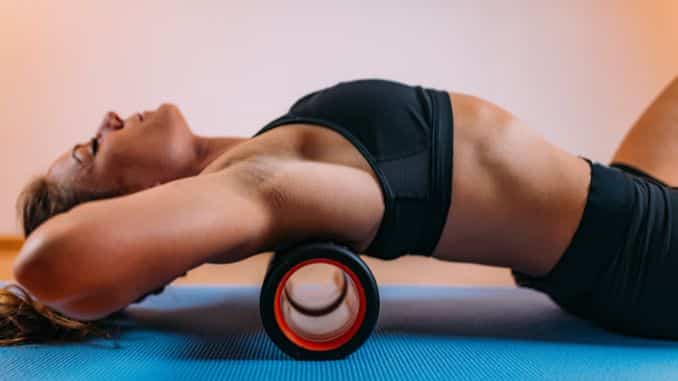
How Foam Rolling Helps Relieve Neck Pain
- Muscle Tension Relief – Using a foam roller for neck pain can help release knots and ease muscle tension, especially in the neck and upper back areas. Experts note, “When you foam roll, you target trigger points, which can immediately reduce muscle tightness.”
- Improved Blood Circulation – Another benefit is enhanced blood flow. A foam roller stimulates circulation, reducing inflammation and speeding up recovery.
- Correcting Posture – Neck pain [2] often stems from poor posture, especially forward head posture. Incorporating foam rolling into your routine can help loosen tight muscles that pull you out of alignment.
- Stress Reduction – Let’s face it: life is stressful. Foam rolling offers a moment of mindfulness and relaxation. Studies show foam rolling can reduce cortisol levels, the stress hormone, making you more relaxed.
Additional Benefits of Foam Rolling
Foam rolling isn’t just for neck pain. It offers a host of other benefits, including:
- Improved Flexibility: Regular use enhances your range of motion.
- Faster Recovery: Foam rolling aids in breaking up lactic acid buildup post-workout.
- Stress Relief: Beyond physical benefits, foam rolling offers mental relaxation.
- Cost-Effective Self-Care: It’s affordable to keep muscles in top shape.
Common Mistakes to Avoid
As much as foam rolling can help reduce pain, it’s important to avoid common pitfalls:
- Applying too much pressure, especially on the neck.
- Rolling too quickly, which reduces effectiveness.
- Ignoring pain signals, which can lead to injury.
Who Should Use Foam Rollers for Neck Pain?
Foam rollers are great for most people but not suitable for everyone. Dr. Leland advises patients, “If you have acute injuries, herniated discs, or other medical conditions, consult a healthcare provider before starting foam rolling.”
Conclusion
Foam roller exercises for neck pain have completely changed the way I handle discomfort. Using this simple and affordable tool can help reduce pain, release tension, and improve flexibility while promoting overall stress relief. Incorporating proper techniques is key, so always listen to your body and avoid overdoing it. If you have pre-existing health conditions, consult a professional before beginning foam rolling exercises.
Relieve tension, boost mobility, and feel amazing with these 7 foam rolling exercises your body will thank you for. Start your journey to recovery now!
How do you decompress your neck with a foam roller?
To perform foam roller exercises for neck pain, lie on your back with the foam roller positioned under your neck. Gently roll your head side to side or move it up and down. This technique helps relieve tension, improve blood flow, and promote relaxation in the neck muscles.
How to fix the neck hump with a foam roller?
Place the foam roller vertically or horizontally under your upper back, gently roll back and forth while supporting your head to improve posture and reduce the hump.
Does lying on a foam roller help posture?
Yes, lying lengthwise on a foam roller helps open up the chest and realign the spine, improving posture.
How long to lie on a foam roller?
Spend 1–2 minutes on each area or up to 10 minutes for relaxation and posture improvement.
Is it OK to foam roll every day?
Daily foam rolling is generally safe and beneficial for muscle recovery and flexibility if the treatment is done properly.
What should you never do when foam rolling?
Avoid rolling directly on joints, bones, or painful areas, and don’t apply excessive pressure to prevent injury.

